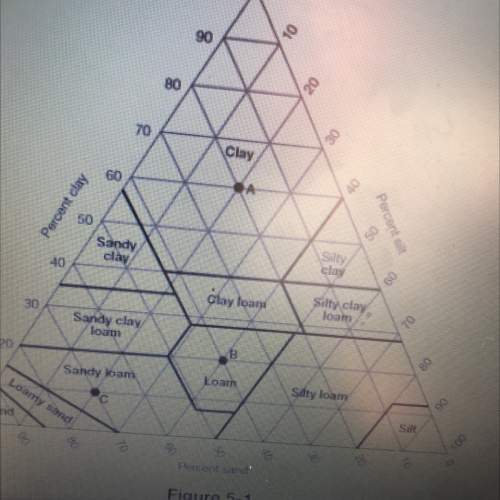
Biology, 24.10.2020 03:20 hkcapricorn7705
You are looking through a light microscope with a 10x eyepiece trying to determine what type of cells you are seeing. You can only see individual cells with 100x total magnification. What type of cell is it, and how much detail would you expect to see?
A Prokaryotic cell, very little detail
B Prokaryotic cell, much detail
C Eukaryotic cell, very little detail
D Eukaryotic cell, much detail

Answers: 1


Other questions on the subject: Biology

Biology, 21.06.2019 23:30, desotoaustin
Examine the two squirrel populations in the accompanying figure. the populations are separated by a geographic barrier. if after a long period of time the two species are no longer separated, what evidence is needed to determine if speciation has occurred? the figure shows two populations of squirrels separated by a geographic barrier. examine the two squirrel populations in the accompanying figure. the populations are separated by a geographic barrier. if after a long period of time the two species are no longer separated, what evidence is needed to determine if speciation has occurred? the figure shows two populations of squirrels separated by a geographic barrier. polyploidy is creating new species. the two populations are not interbreeding freely. hybrid offspring of the two populations begin to appear. one species will increase into a population size twice as large as the other species.
Answers: 2

Biology, 22.06.2019 00:30, seannasal2804
Experiments in environmental toxicology can sometimes be manipulative experiments in which the researcher actively chooses and manipulates the independent variable. in hunt's study, for example, dosages of bpa were manipulated and the effects were measured. in manipulative studies, the researcher controls all the other variables in the experiment, so any health effects observed in the test subjects can be attributed to differences in the independent variable. in other cases, researchers use natural experiments in which the dependent variable (typically a measure of organism health) is measured under differing contexts that are not manipulated. say, for example, that an accidental chemical spill contaminates five ponds. to determine the possible effects of the toxic chemical on frogs, a researcher could compare the hatching rate of frog eggs laid in those five ponds to the hatching rate of eggs laid in five uncontaminated ponds nearby. this would be an example of a natural experiment because concentrations of the toxic chemical in the ponds were not controlled by the experimenter, but rather resulted from the chemical spill. drag type of experiment on the left to the example of experiment on the right. blood concentrations of bpa in college students are compared to their recent manipulative consumption of canned food items 2. the feeding behavior of fish in streams that receive acidic runoff from strip mines is compared to the feeding behavior of fish in unaffected streams. the deformity rate in baby birds from nests in pesticide-sprayed fields is compared to the deformity rate in birds from nests in unsprayed fields 4 tumor development is compared in mice exposed to five dosages of a known carcinogen in the laboratory foraging activity levels are compared in tadpoles exposed to four concentrations of toxic metals in the laboratory. growth of corn plants is compared in field plots sprayed with three different dosage: s of weed killer 7 bpa concentrations in the urine of people with diabetes are compared to bpa concentrations in the urine of people without diabetes - natural; manipulative
Answers: 1

Biology, 22.06.2019 00:50, kseniyayakimno
When is your respiration rate likely to change? a. when your intestines are digesting b. when your cells have too much glucose c. when your cells need more oxygen d. when your liver is working after a meal
Answers: 2

Biology, 22.06.2019 06:30, nacgrading3p6d8pf
1. describe the structure and function of the specialized cells you observed in the video. 2. research the types of cells present in the kidney.
Answers: 1
You know the right answer?
You are looking through a light microscope with a 10x eyepiece trying to determine what type of cell...
Questions in other subjects:


Mathematics, 15.05.2020 14:57




Mathematics, 15.05.2020 14:57


Mathematics, 15.05.2020 14:57





